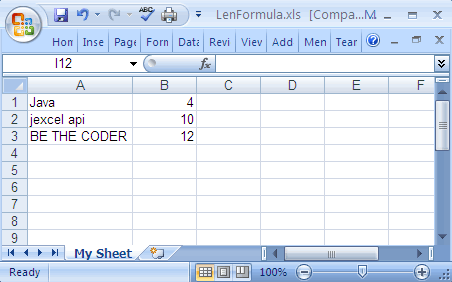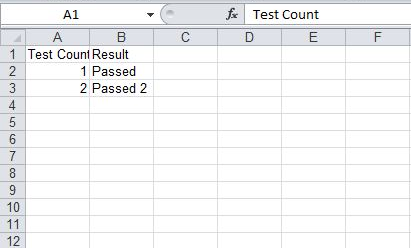

You can use the other HTTP methods (like PUT or DELETE) to interact with the data as well. For example, you’d view Ada’s data by issuing a GET request to /people/Ada, and you’d modify Ada’s data by issuing a POST request to /people/Ada.
#Jxl api example java code
Your REST API is server code whose job it is to provide access to your data and to enforce rules like who can see what. This tutorial introduces the idea of creating a REST API, which is a way of organizing our code so we can access our data from multiple applications.
#Jxl api example java android
But what if we want to support different kinds of programs instead of just a web app? What if we want to create a desktop application or an Android app? How do we provide access to our data for those programs without writing everything from scratch each time?
#Jxl api example java how to
We know how to get user input, how to access a database, and how to handle user logins. Now we know how to create a web app using servlet classes. As mentioned, these examples are heavily based on the Apache HttpClient samples, and I recommend looking at that code for more examples.Creating a REST API Creating a REST API tutorial java server rest ajax json I hope these examples of creating Java REST (RESTful) clients using the Apache HttpClient have been helpful. Java REST clients using the Apache HttpClient library Header headers = httpResponse.getAllHeaders() įor (int i = 0 i < headers.length i++) HttpEntity entity = httpResponse.getEntity() HttpResponse httpResponse = httpclient.execute(target, getRequest) HttpGet getRequest = new HttpGet("/forecastrss?p=80020&u=f") HttpHost target = new HttpHost("", 80, "http")

* Try this Twitter API URL for another example (it returns JSON results):ĭefaultHttpClient httpclient = new DefaultHttpClient() * This executes a call against the Yahoo Weather API service, which is * A simple Java REST GET example using the Apache HTTP library. Here's the source code for this first example class.

Hopefully you can try this against different URLs where you can examine the header information in more detail. I wish I could have provided this demo with the OpenSSO demos I wrote a few years ago (see my PHP OpenSSO REST API examples), because the OpenSSO REST API made extensive use of header information. It also shows how to get all of the headers from the web service you're calling. This REST client uses the following Apache HttpClient classes: That service actually returns information in an RSS format, but if you don't mind parsing that XML, it's an easy way to get weather updates. This first example shows a combination of these Apache HttpClient classes used to get information from the Yahoo Weather API. But hopefully these examples will make other POST or other RESTful examples easier to read. The REST client examples I share here are based on the examples on the HttpClient website I've mostly just tried to make them a little easier to read, and add some additional documentation to them.Īlso, I'm just focusing on HTTP GET requests in this article, because I'm writing real-world code to hit the Twitter REST API, and all I need right now are GET requests. In this article I share some source code for some simple Java REST clients that use the Apache HttpClient project. I started writing some Java REST (RESTful) clients lately, and in doing so, I've been looking at several different ways to do this, including using the Apache HttpClient project, the Jersey project, Apache CXF, and more.


 0 kommentar(er)
0 kommentar(er)
